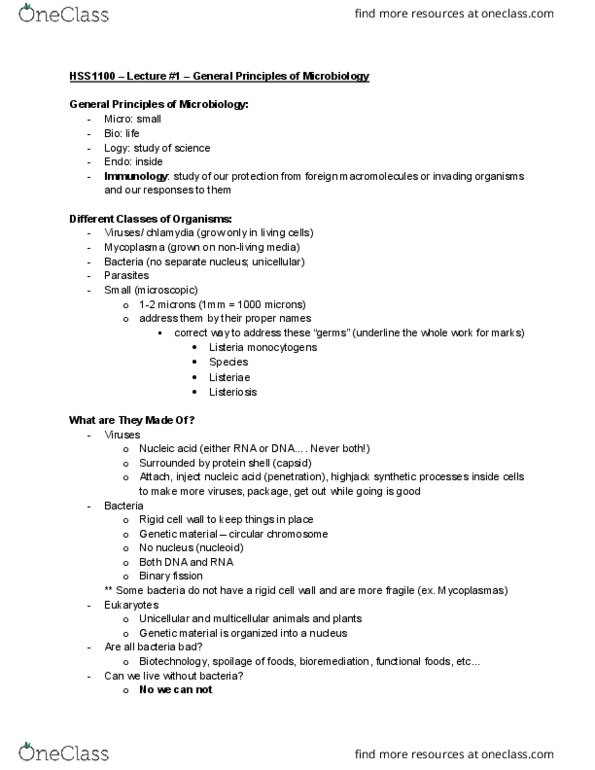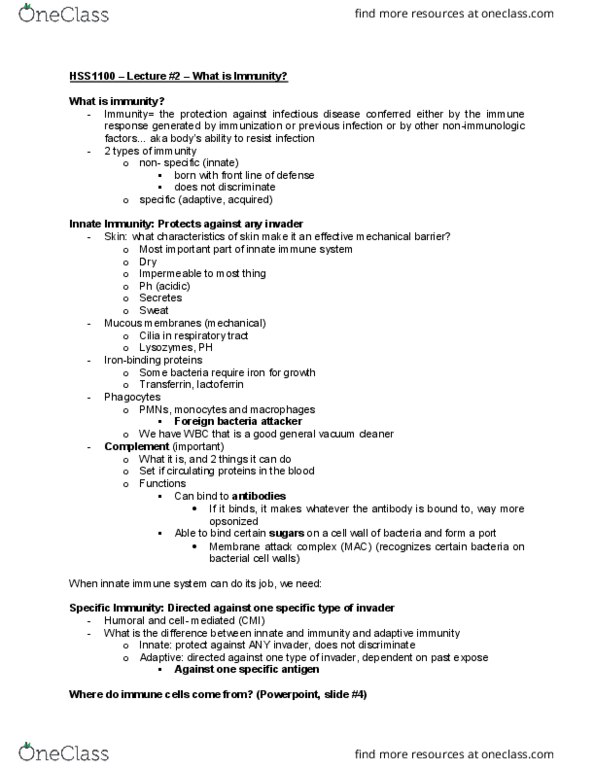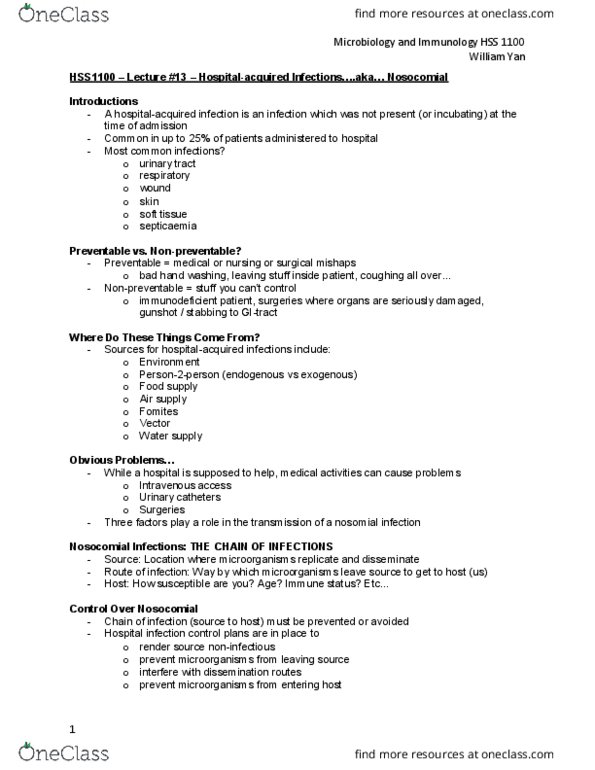HSS 1100 Lecture Notes - Lecture 13: Urinary Catheterization, Sepsis, Infection Control
HSS 1100 verified notes
13/13View all
Document Summary
Hss1100 lecture #13 hospital-acquired infections . aka nosocomial. A hospital-acquired infection is an infection which was not present (or incubating) at the time of admission. Common in up to 25% of patients administered to hospital. Most common infections? respiratory: urinary tract, wound, skin, soft tissue, septicaemia. Preventable = medical or nursing or surgical mishaps: bad hand washing, leaving stuff inside patient, coughing all over Non-preventable = stuff you can"t control immunodeficient patient, surgeries where organs are seriously damaged, gunshot / stabbing to gi-tract. Sources for hospital-acquired infections include: environment, person-2-person (endogenous vs exogenous, food supply, air supply, fomites, vector, water supply. While a hospital is supposed to help, medical activities can cause problems. Three factors play a role in the transmission of a nosomial infection. Source: location where microorganisms replicate and disseminate. Route of infection: way by which microorganisms leave source to get to host (us) Chain of infection (source to host) must be prevented or avoided.




